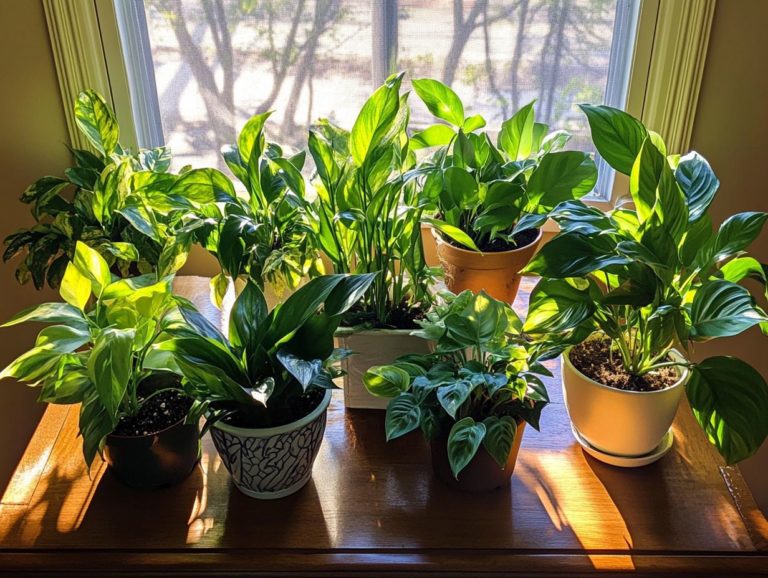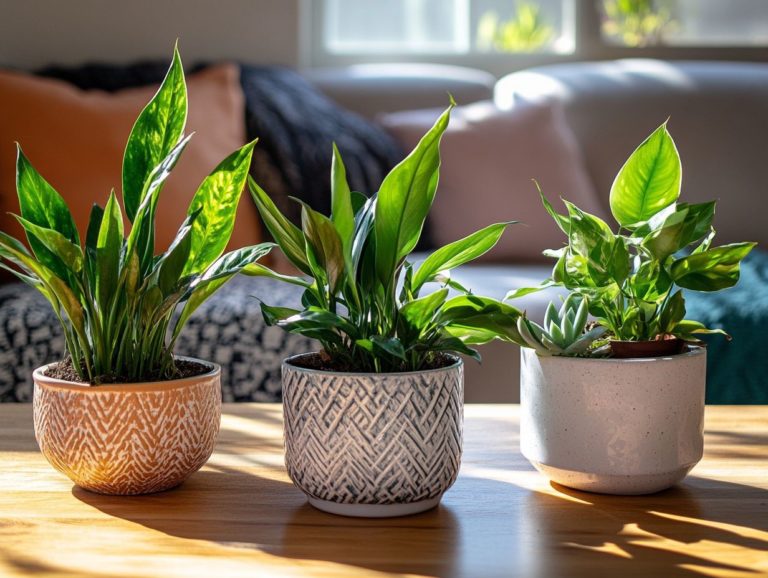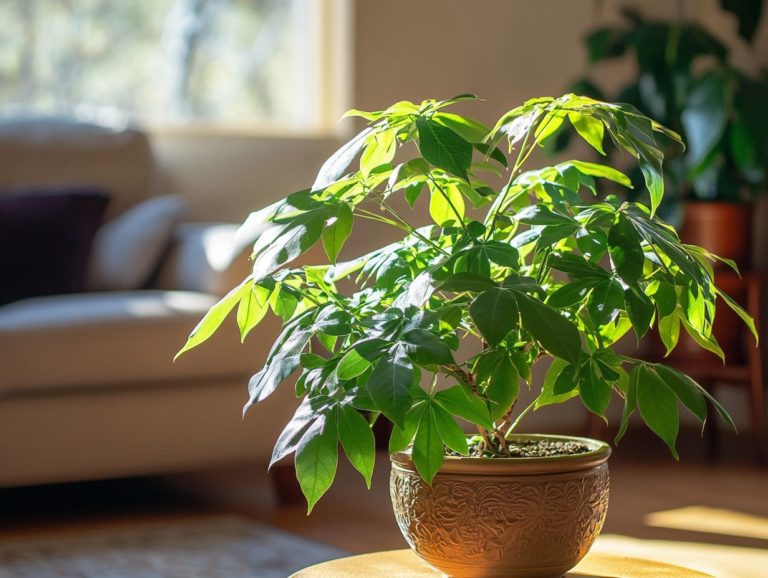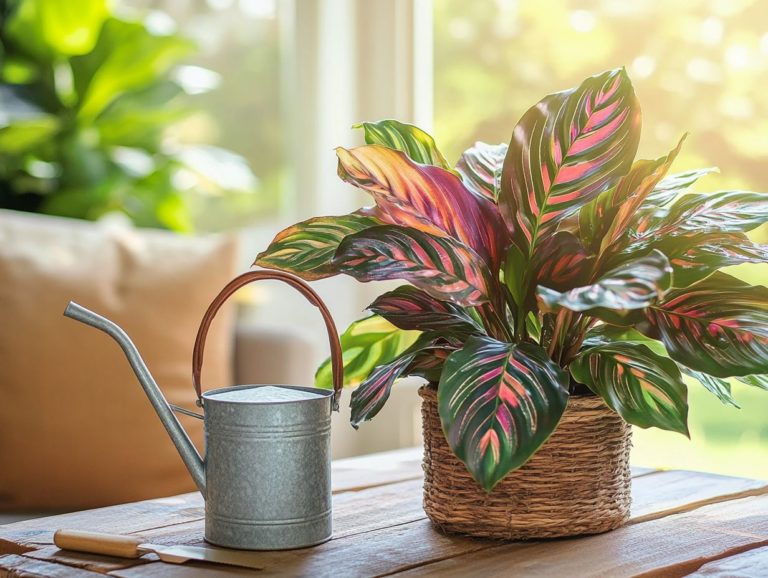Caring for Rubber Plants: Best Practices
Rubber plants are not only strikingly beautiful; they re also quite easy to care for. This makes them a go-to choice for indoor gardeners like you.
This guide will walk you through the essentials of rubber plant care. You ll learn how to select the ideal location, understand their light and temperature requirements, and master the art of watering and fertilizing.
You ll also discover how to prune and propagate your plant effectively. Plus, you ll learn to identify common pests and diseases and troubleshoot any challenges you may face along the way.
Follow these tips, and watch your rubber plant flourish! It will turn your space into a breathtaking oasis.
Contents
Key Takeaways:
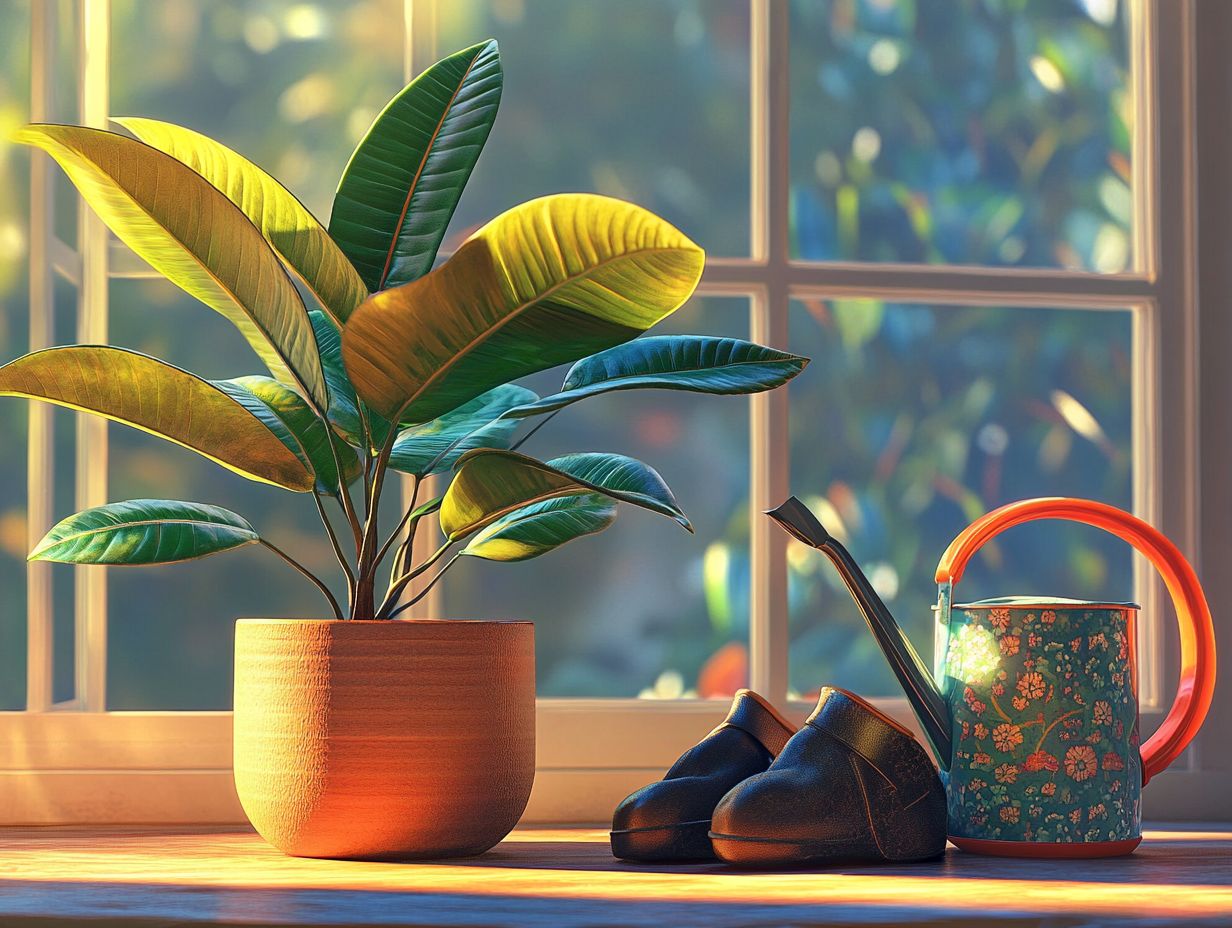
- Choose the right location for your rubber plant by considering its light and temperature requirements.
- Proper watering and fertilization techniques are crucial for the health of your rubber plant.
- Pruning and propagation help maintain the shape and growth of your rubber plant. Identifying and treating common pests and diseases is essential for its well-being.
Basic Plant Characteristics
The Rubber Tree, scientifically known as Ficus elastica, originates from Southeast Asia. It is a favored choice among indoor plants, thanks to its glossy leaves and striking foliage.
This evergreen perennial belongs to the Moraceae family. Its distinctive growth habits make it a desirable option for any plant enthusiast.
You ll find that its air-purifying qualities are a boon for your environment. Its aesthetic appeal elevates your space, introducing a serene green presence to both homes and offices.
Choosing the Right Location for Your Rubber Plant
Choosing the best spot for your Rubber Plant is vital for its growth. It loves bright, indirect light and a stable indoor environment with moderate humidity.
When positioned thoughtfully, it enhances growth, resulting in lush, glossy leaves while reducing issues like leaf drop. Your attention to its placement will make all the difference in its vibrant journey.
Light and Temperature Requirements
Ficus elastica thrives under specific light conditions, with bright, indirect light being your best ally for promoting glossy leaves and vibrant growth. It s crucial to maintain a consistent indoor temperature, steering clear of sudden shifts that could stress your plant.
This tropical favorite flourishes when light is adequately filtered. Direct sunlight can scorch its delicate foliage, resulting in unsightly brown spots. Keeping the temperature between 60 F and 75 F creates an ideal environment for these indoor plants.
Exposure to drafts or temperature fluctuations can lead to stunted growth and leaf drop, significantly impacting overall health. Grasping these requirements is essential for anyone looking to enjoy the beauty of Ficus elastica all year round.
Watering and Fertilizing Your Rubber Plant
Establishing a consistent watering routine and making informed fertilizer choices are essential for the health of your Rubber Plant. Improper watering can lead to root rot. Maintaining the right moisture levels is vital for promoting vibrant growth.
Select the right soil and ensure proper drainage to greatly improve your plant’s health. Choosing the right soil type and allowing water to flow out easily will benefit your plant’s overall well-being.
Ready to get started? Bring your rubber plant home today!
Proper Techniques and Frequency
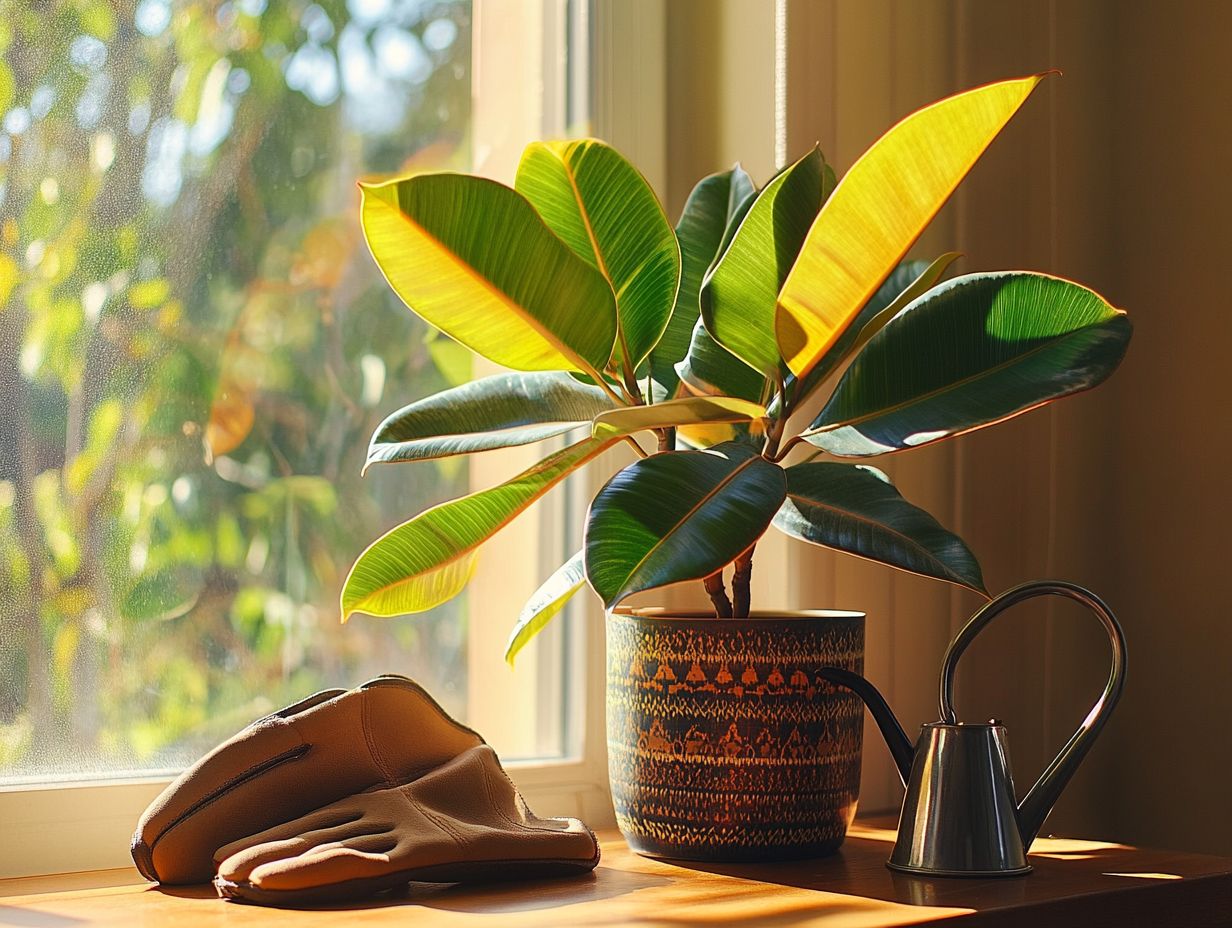
To ensure your plants thrive, establish a watering routine that allows the top few inches of soil to dry out between sessions. Pair this with the right fertilizer to encourage healthy growth while keeping root rot at bay.
Environmental factors significantly influence your watering frequency. For example, if your plants are in high humidity, they may not need as much water. Also, think about your plants’ size and type, as well as pot drainage, since these factors affect moisture retention. Make it a habit to check soil moisture regularly stick your finger in the soil to gauge its dampness before watering.
By fine-tuning your watering schedule and selecting appropriate fertilizers, you can cultivate robust root systems and vibrant foliage. This practice also protects against issues like root rot that can stem from overly wet conditions.
Pruning and Propagation of Rubber Plants
Implementing effective pruning techniques and exploring various propagation methods can greatly enhance the health and appearance of your Rubber Plant. By managing its growth habits, you can prevent issues like leaf drop, which often signals stress or improper care.
Regular pruning not only elevates its aesthetic charm but also fosters bushier, more vibrant growth.
When and How to Prune
Knowing when and how to prune your Rubber Plant is essential for maintaining its health and enhancing its growth habits. Late spring and early summer are the prime times for pruning, as they align perfectly with the plant s natural growth cycle. This offers an ideal opportunity for rejuvenation.
Before you begin, arm yourself with the right tools sharp pruning shears and gloves to shield your hands from that milky sap. Take a moment to assess the plant s structure. Removing any dead or damaged leaves and leggy stems will encourage healthier growth. This not only improves the plant’s aesthetics but also enhances air circulation and light penetration.
If you re looking to shape your Rubber Plant, consider cutting just above a node. This simple trick will spark new branches and give your indoor garden a lively boost!
Methods for Propagation
You can successfully propagate your Rubber Tree using various methods, with stem cuttings being one of the most popular techniques. Enhancing this approach with perlite, a lightweight material that helps with soil drainage and air circulation, can significantly improve soil aeration.
Another effective strategy is air layering, which involves a healthy branch and encourages root growth while it remains attached to the parent plant. To do this, make a small incision on the stem, apply moist sphagnum moss, and cover it with plastic to retain humidity.
Alternatively, you might consider sowing seeds in well-draining soil, though this method typically requires a bit more patience and time. Whichever technique you choose, ensuring proper soil aeration is vital as it fosters healthy root development and minimizes the risk of rot.
Common Pests and Diseases of Rubber Plants
Understanding the common pests and diseases that can afflict Rubber Plants is essential for your effective pest control strategy. Issues like leaf drop and chlorosis often indicate infestations or environmental stressors that must be addressed right away to keep your plants healthy.
By utilizing neem oil, you can implement an effective organic solution that not only combats pests but also promotes the overall health of your plants.
Identifying and Treating Issues
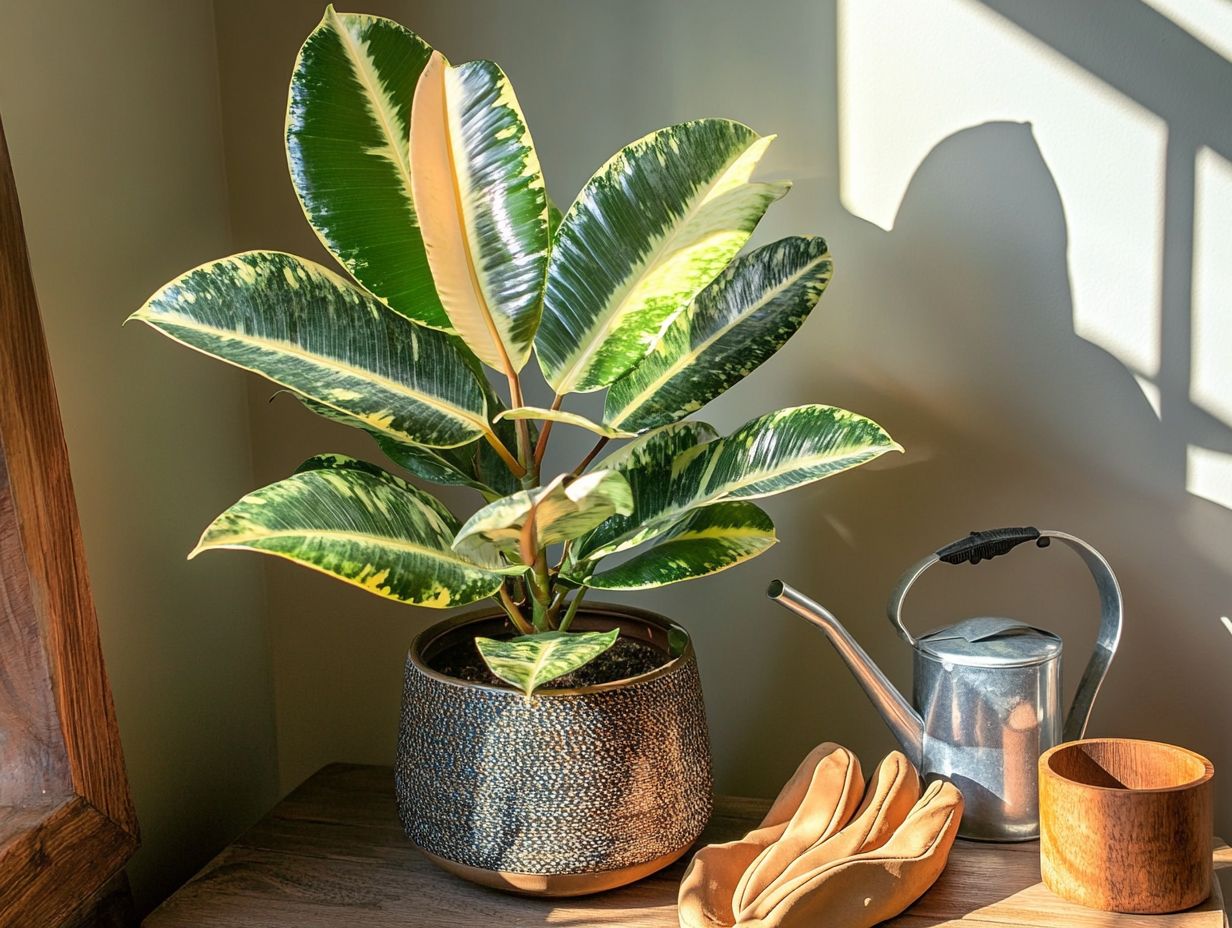
Identifying and addressing issues in your Ficus elastica is crucial for its health. Symptoms like leaf drop and yellowing of leaves are key indicators that it s time for you to take action.
A keen eye for these signs can be the difference between a thriving rubber plant and one that’s barely hanging on. When diagnosing problems, start by closely examining the leaves for pests such as spider mites or mealybugs. These nuisances can severely compromise vitality and often leave behind stippled foliage or a sticky residue. To ensure your plants flourish, consider following the best practices for indoor plant care, which are clear indicators that trouble is brewing.
If you notice yellowing leaves, it could signal nutrient deficiencies or water stress. Tackling these issues promptly with targeted care or by adjusting your care routine will not only resolve current problems but also help prevent future infestations.
Regular monitoring and implementing preventative measures will help ensure that your beautiful indoor plant remains vibrant and healthy for years to come.
Troubleshooting Common Problems with Rubber Plants
Troubleshooting common issues with Rubber Plants, like yellowing leaves and wilting, is essential for maintaining their health. These symptoms often signal deeper problems that can be resolved with attentive care and thoughtful adjustments to their environment.
Yellowing Leaves and Wilting
Yellowing leaves and wilting are common issues you might encounter with Rubber Plants. These often stem from overwatering, insufficient humidity, or stress due to environmental changes.
If not addressed promptly, these conditions can lead to root rot. To effectively diagnose these problems, examine your plant’s watering routine and the surrounding environmental conditions.
Start by checking the soil for proper drainage; soggy soil is a telltale sign of overwatering and creates a welcoming environment for root rot. Next, keep an eye on the humidity levels Rubber Plants thrive in moderate humidity.
If humidity drops too low, your plant may suffer, resulting in yellowing leaves that eventually drop. Consider misting the leaves or using a humidifier to elevate moisture levels.
If you suspect overwatering is the culprit, allow the soil to dry out between watering sessions. Ensure there’s adequate airflow around the roots to facilitate recovery. For those looking to enhance their Rubber Plant care, learning how to propagate rubber plants can help restore your plant to its vibrant self.
Frequently Asked Questions
What are the best practices for caring for rubber plants?
Some best practices for caring for rubber plants include proper watering, providing adequate sunlight, using potting soil with a drainage hole, and regularly dusting the leaves. Monitoring humidity levels can also improve their health.
How often should I water my rubber plant?
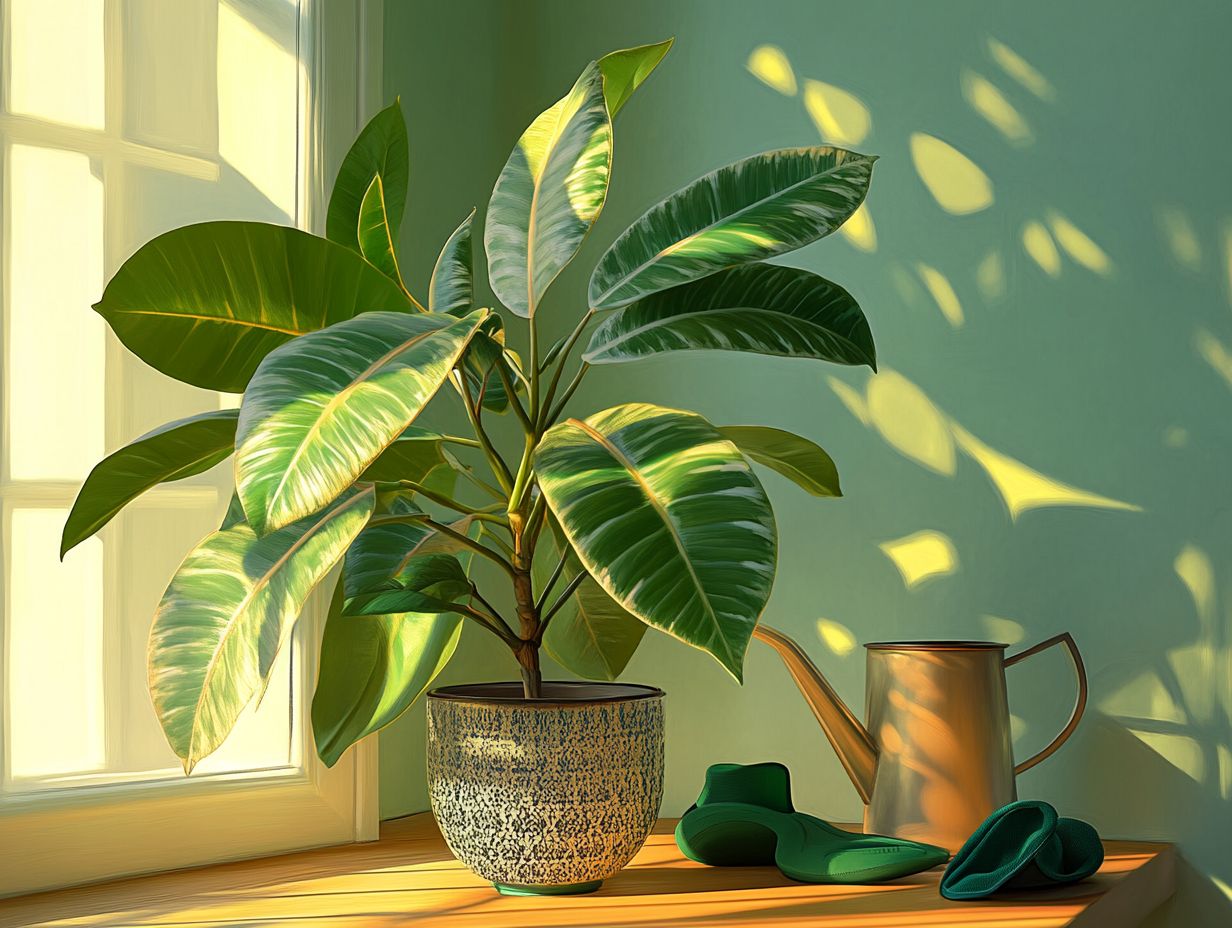
Rubber plants should be watered when the top inch of soil is dry. This is typically once a week but may vary depending on the plant’s environment and size.
What type of soil is best for rubber plants?
Rubber plants thrive in well-draining soil that retains moisture, such as a mixture of potting soil, peat moss, and perlite. Avoid using soil that is too compact or heavy.
What is the ideal location for a rubber plant?
Rubber plants thrive in bright, indirect sunlight. While they can tolerate some shade, avoid direct sunlight to prevent scorching their glossy leaves.
How do I maintain the shape of my rubber plant?
Regular pruning keeps your rubber plant healthy and full. Trim any overgrown or damaged branches to encourage new growth.
Can I use fertilizer on my rubber plant?
Absolutely! Use a balanced liquid fertilizer once a month in spring and summer. Follow the instructions carefully to avoid over-fertilizing, which can lead to yellowing of leaves.

